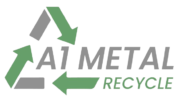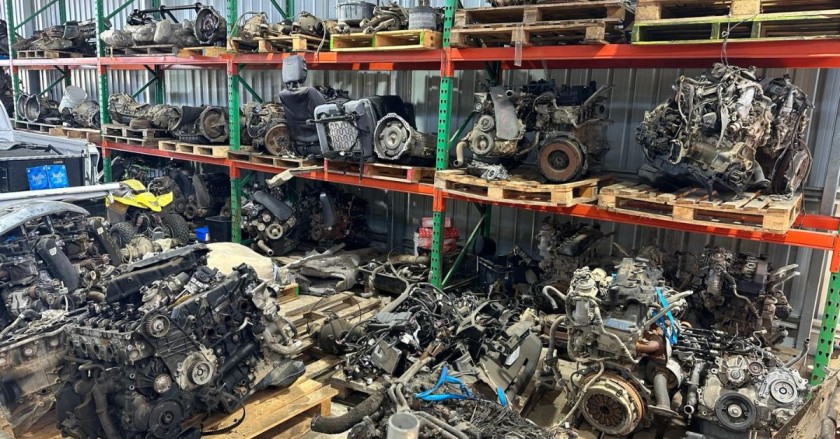Copper is one of the most valuable metals in the scrap industry, prized for its excellent conductivity, corrosion resistance, and recyclability. If you’re in the business of scrapping or just looking to turn old copper items into cash, understanding the different grades of copper is essential.
The two most commonly bought and sold types of copper scrap are #1 copper and #2 copper. While they might seem similar at a glance, the difference between the two can significantly impact how much you get paid at the scrap yard.
What Is #1 Copper?
#1 copper is the highest grade of copper scrap available to sellers. It is the most desirable form for recyclers due to its high purity and low contamination.
Characteristics of #1 Copper:
- Clean and unalloyed: The copper must be free from paint, solder, corrosion, insulation, fittings, and any other materials.
- Uncoated and unburned: Copper should not be burnt, which often happens when people try to remove insulation from wire with fire, a practice that is not only unsafe but also reduces the value.
- Shiny appearance: Especially in the case of bare bright copper wire, the copper should be bright and shiny, not dull or tarnished.
- Wire size: For wire to be classified as #1, it typically must be thicker than 1/16 inch (about 14-gauge or larger).
Common Sources of #1 Copper:
- Stripped electrical wires from residential or commercial wiring
- New plumbing pipes or cuttings
- Bus bars and transformer wire
- High-voltage industrial wire
What Is #2 Copper?
#2 copper is the next grade down from #1. It still has good value, but because it’s not as clean or pure, it comes with a lower price per pound.
Characteristics of #2 Copper:
- May have impurities or corrosion: This includes paint, solder, oxidization, or coatings.
- May be burnt: Burnt copper wire, especially if it still has a copper core and isn’t aluminum, is usually classified as #2.
- Thinner gauge wires: Thin wire or wire with minor insulation remnants often falls into this category.
- May contain attachments: Small amounts of brass fittings, soldered joints, or paint may still be present.
Common Sources of #2 Copper:
- Old copper plumbing with fittings
- Painted or oxidized copper pipes
- Electronics and appliances (internal copper)
- Burnt or partially stripped wire
- Roofing copper with tar or paint
Key Differences Between #1 and #2 Copper
| Feature | #1 Copper | #2 Copper |
| Cleanliness | Must be 100% clean | May contain solder, paint, or corrosion |
| Coatings or Insulation | None | Some coating, solder, or burnt material allowed |
| Appearance | Bright, shiny, unoxidized | Dull, tarnished, oxidized or painted |
| Size | Wire must be at least 1/16” thick | Any size wire, often thinner |
| Value | Higher price per pound | Lower price per pound |
Why the Classification Matters
Recycling facilities and scrap yards use these classifications to determine how much labor and processing will be required before the copper can be reused or melted down.
- #1 copper is ready to be melted down with minimal cleaning or processing.
- #2 copper needs more preparation, possibly additional chemical or mechanical cleaning to remove impurities, which adds cost to the recycler.
Because of this, #1 copper often sells for 20–30% more than #2 copper, or even higher, depending on market demand and commodity prices.
Tips for Maximising Your Scrap Copper Value
If you’re bringing in copper to sell, here are a few tips to help you get the most out of your scrap:
1. Separate Your Copper
Always sort #1 copper and #2 copper before heading to the scrap yard. If you mix them, you may only get paid the lower #2 copper rate.
2. Strip Insulated Wire (If Worth It)
Stripping wire to expose the clean, shiny copper can make it eligible for #1 classification, but only if done safely and correctly. Avoid burning the insulation, as it may damage the copper and reduce its grade.
3. Clean Your Pipes
Remove brass fittings, soldered joints, or any paint on copper pipes when possible. Clean, unalloyed pipe sections can be upgraded to #1 copper.
4. Use Proper Tools
Wire strippers, pipe cutters, and sandpaper can be your best tools for getting clean copper. Take the time to prepare your scrap properly.
How #1 and #2 Copper Prices Are Determined
Copper scrap prices fluctuate daily based on global market trends, especially demand in construction, manufacturing, and electronics. Scrap yards adjust their rates accordingly. Other factors that affect pricing include:
- Grade (e.g., #1 vs #2)
- Weight/volume
- Cleanliness and contamination
- Current spot prices for copper
- Location and demand in your area
To get the best rates, it’s a good idea to call ahead or check online for today’s copper prices.
We Buy Copper Scrap – Top Dollar Paid!
At A1 Metal Recycle, we specialise in buying all grades of copper, including #1, #2, and insulated copper wire. We provide:
- Accurate grading
- Honest and competitive pricing
- Fast service
- Convenient location and easy drop-off
Whether you’re a contractor, electrician, plumber, demolition company, or homeowner with leftover wire and pipe, we’ll help you turn your copper scrap into cash.
Bring in your copper scrap and experience the difference with A1 Metal Recycle, where your metal is worth more!



